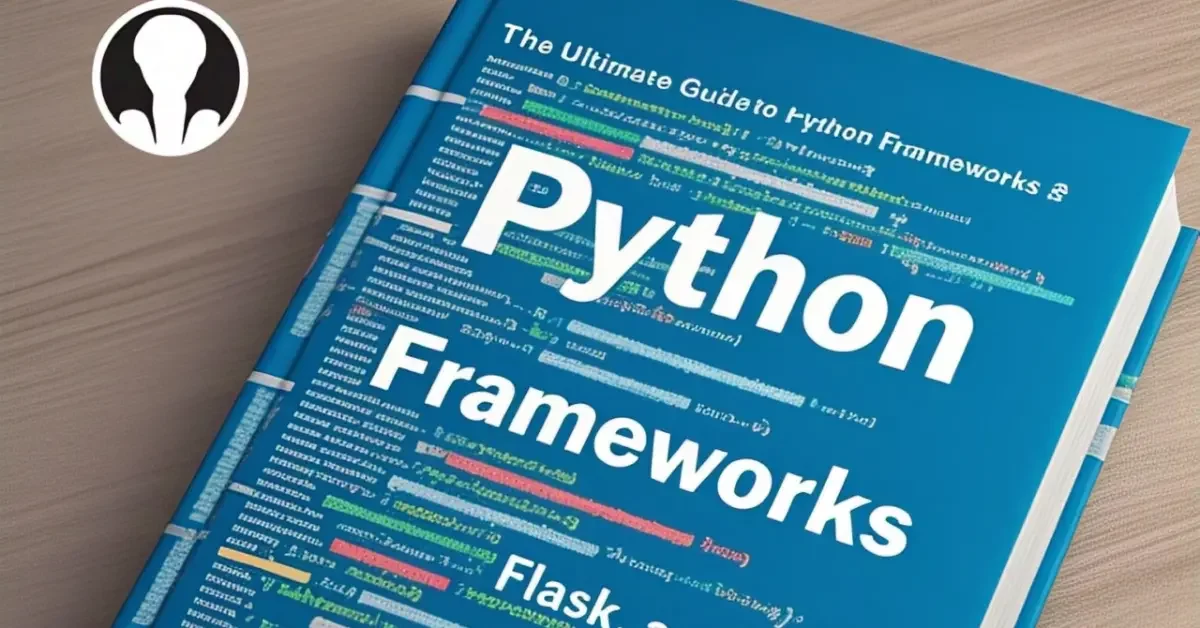This comprehensive guide is designed to help you navigate the world of Python frameworks, specifically focusing on popular choices like Django and Flask. As you look into this post, you’ll discover the strengths and use cases of each framework, enabling you to make informed decisions for your projects. Whether you’re building a robust web application or a simple API, understanding these frameworks can greatly enhance your development experience and efficiency. Let’s explore the vitals that will elevate your coding journey.
Key Takeaways:
- Django: Ideal for developing large, complex applications with its “batteries-included” approach, offering built-in features like ORM, authentication, and admin panel that speed up development.
- Flask: A lightweight and flexible micro-framework that allows developers to start simple projects quickly, making it perfect for smaller applications or prototyping.
- Choosing the Right Framework: It’s important to assess project requirements, team expertise, and scalability needs when selecting between frameworks to ensure optimal performance and maintainability.
Understanding Python Frameworks
While exploring into the world of Python programming, it’s important to get a solid grasp of frameworks. Frameworks provide a structured foundation for building applications, which can streamline your development process. If you’re looking to enhance your coding efficiency and productivity, knowing about Python frameworks is imperative.
What is a Python Framework?
Frameworks are imperatively pre-built collections of code that allow you to develop applications more effectively. They provide reusable components and tools, meaning you can focus on the unique aspects of your project without getting bogged down by repetitive tasks. Python frameworks reduce the time and effort needed for coding, allowing you to produce functional applications quickly.
In the world of Python, a framework often dictates the architecture of your application. This can involve the way you handle routing, how you manage databases, and the structure of your project’s file system. This ensures that your applications are organized and maintainable, making it easier for you and other developers to work on the code over time.
Types of Python Frameworks
Python frameworks can be broadly categorized into two main types: full-stack and micro-frameworks. Understanding these classifications can help you choose the right framework based on your project requirements. Full-stack frameworks provide a comprehensive set of tools and features needed for most applications, while micro-frameworks are more lightweight and flexible, offering minimalistic components for simpler tasks.
| Type of Framework | Description |
|---|---|
| Full-Stack | Offers an all-in-one solution with components for various web development tasks. |
| Micro-Framework | Lightweight frameworks designed for simplicity, allowing you to pick your own components. |
| Django | A robust full-stack framework known for its “batteries-included” philosophy. |
| Flask | A popular micro-framework that provides the imperatives without too much overhead. |
| Pyramid | Flexible and modular, suitable for both small and large applications. |
Another noteworthy aspect of Python frameworks is their evolving nature. Frameworks receive regular updates and community support, which enables you to leverage new features and improvements continuously. This adaptability keeps your projects relevant in a rapidly changing tech landscape.
- Django and Flask are two of the most commonly used Python frameworks, but there are many others worth exploring.
- Pyramid and FastAPI are also gaining popularity for specific use cases.
- Learning multiple frameworks allows you to adapt to different project requirements.
- Each framework comes with its own strengths and weaknesses, influencing your choice.
- Recognizing the framework best suited to your project’s needs will significantly enhance your development experience.
With a broad spectrum of frameworks available, you can tailor your programming environment to meet your specific needs. Assessing the unique requirements of your project alongside the features of each framework will empower you to make informed decisions as you move forward in your Python programming journey.
- Researching the community, documentation, and support for each framework is an imperative part of your selection process.
- Consider the scalability of the framework, especially if you plan to grow your application over time.
- Hands-on experience with a few frameworks can greatly enhance your understanding.
- Some frameworks may have a steeper learning curve than others, so choose wisely based on your skill level.
- Recognizing these factors will help you navigate the world of Python frameworks with confidence.
Overview of Popular Python Frameworks
Not all frameworks are created equal, and choosing the right one for your project can be a daunting task. In this section, we’ll explore some of the most popular Python frameworks, including Django, Flask, FastAPI, and others, to help you make an informed decision about which tool will best meet your needs.
Django
Even if you are new to web development, Django stands out as a robust choice for building complex web applications. It follows the “batteries-included” philosophy, which means it comes with a wide array of built-in features, such as an ORM system, an admin panel, and secure authentication mechanisms. This can significantly speed up your development process and allow you to focus on building your application’s core features instead of dealing with common tasks like database management.
Django’s architecture encourages best practices and is optimized for scalability. Many well-known websites use Django, which is a testament to its reliability and performance. With a strong community backing, finding resources and support to tackle challenges becomes easier, making it an excellent option for both beginners and experienced developers.
Flask
If you prefer a framework that is more lightweight and flexible, Flask might be the right fit for you. Flask is a micro-framework that allows you to start simple and expand as needed. This modularity means you have the freedom to select and integrate only the components you require, rather than being burdened by an extensive set of built-in features that you might not use.
Another appealing aspect of Flask is its simplicity and ease of use, making it ideal for smaller applications, prototypes, or when you want swift development cycles. Plus, the large Flask community means you have access to plenty of extensions and tools that can easily enhance your application’s functionality without overcomplicating your codebase.
With Flask, you can build everything from small, single-file applications to more extensive, complex systems. Its flexibility extends to defining project structures and choosing how you want to handle requests and responses, giving you complete control over your workflow.
FastAPI
If performance is a priority for your application, you should seriously consider FastAPI. This modern web framework is built on top of Starlette and Pydantic, enabling you to create APIs quickly while still ensuring high performance and automatic documentation generation. FastAPI is designed to be easy to use, even if you are not yet familiar with asynchronous programming, making it suitable for both novices and experienced developers.
FastAPI leverages Python’s type hints, which lead to better code quality and a more intuitive development experience. The framework is particularly beneficial for applications requiring complex data validation and serialization, as it handles data parsing seamlessly through integrated tools.
With FastAPI, you can expect to see impressive speed performance due to its asynchronous capabilities. Thanks to its modern architecture, you can easily build RESTful APIs and microservices without compromising on performance or developer productivity.
Other Notable Frameworks
Clearly, the landscape of Python frameworks extends beyond just Django, Flask, and FastAPI. There are other notable frameworks you should be aware of, such as Pyramid, Tornado, and Bottle. Each of these frameworks offers unique features and advantages that cater to various project requirements, whether you need robustness, speed, or simplicity in your solution.
Cases you might consider these alternatives include developing applications that require a high level of scalability, real-time capabilities, or specific project structures that other frameworks may not support as effectively. By exploring these other frameworks, you can discover new possibilities and find a development approach that aligns perfectly with your project’s goals.
The Ultimate Guide to Python Frameworks – Step-by-Step Guide to Choosing the Right Framework
Now that you’re ready to examine the world of Python frameworks, deciding which one to choose can seem daunting. However, by breaking down your decision-making process into simple steps, you can identify the framework that best aligns with your project’s goals and resources. Below, you’ll find a structured guide to help you make an informed decision.
| Steps | Details |
|---|---|
| Define Your Project Requirements | Identify the core objectives of your project and the specific features you need. |
| Evaluate Framework Features | Assess the unique capabilities of each framework and how they align with your needs. |
| Consider Community Support | Look into the community around each framework, including available tutorials and forums. |
| Assess Scalability and Maintenance | Determine how your framework choice will handle future growth and updates. |
Define Your Project Requirements
An effective approach to choosing a framework starts with defining your project requirements. You need to critically evaluate what your project demands in terms of functionality, complexity, and expected outcomes. This could range from features like user authentication, database management, to more specific needs like API integration.
Additionally, consider the timeline and budget for your project. Are you aiming for a quick turnaround, or do you have the luxury of time to build something more intricate? By aligning your project requirements with your resources, you set a solid foundation for selecting a suitable framework.
Evaluate Framework Features
Any framework may offer a variety of features, but understanding which are most relevant to your project is necessary. Take the time to explore the documentation of frameworks like Django and Flask, looking for features like built-in security measures, templating engines, or ORM capabilities. You should weigh these features against your initial project requirements.
Additionally, consider how these features will impact your development process. Some frameworks come with a steep learning curve, while others may be more straightforward, allowing for faster development. This is something you’ll want to balance against your team’s expertise and the nature of your project.
To ensure you make the right choice, create a comparison matrix where you can visually assess how features align with your requirements. This could include categories like ease of use, extensibility, and speed, making it easier to visualize which framework stands out as the best fit.
Consider Community Support
Consider the importance of community support when evaluating frameworks. A strong community can provide valuable resources, including documentation, tutorials, and forums where you can seek help if needed. Frameworks like Django typically have extensive community contributions, offering a wealth of third-party libraries that can save you time and effort.
The responsiveness of community members can also influence your project’s timeline. If you run into issues or require guidance, a supportive community can significantly expedite your development process. Keep an eye on code repositories and community forums to gauge how active and helpful the community is.
Support from the community often ensures longevity and continued improvements to the framework. A vibrant community can lead to frequent updates and innovations, so consider this factor as you make your decision.
Assess Scalability and Maintenance
An necessary aspect of framework selection is to assess scalability and maintenance. You’ll want to ensure that your chosen framework can handle your project as it grows. A framework that accommodates your project’s initial requirements may become limiting as its complexity increases. Look for features that allow for easy scaling, such as modular designs or supporting microservices architecture.
Moreover, consider the maintenance aspect. How easy is it to update the framework or make changes as your project evolves? Clear documentation and a well-structured community can greatly assist you in keeping your application running smoothly over time.
Features like built-in tools for migrating and versioning your database can significantly ease the maintenance burden as well. Ensure the framework allows for flexible modifications without compromising the integrity of your application.
Pros and Cons of Each Framework
After exploring the main features of various Python frameworks, it’s necessary to weigh their pros and cons for your specific projects and needs. Each framework has its unique strengths and weaknesses, which can significantly impact your development experience. Below is a breakdown of the pros and cons of Django, Flask, and FastAPI.
| Framework | Pros | Cons |
|---|---|---|
| Django | Comprehensive & feature-rich | Steep learning curve |
| Strong community support | Monolithic structure can be limiting | |
| Built-in authentication system | Heavyweight for small applications | |
| Flask | Lightweight and flexible | Limited built-in features |
| Easier to get started | May require numerous extensions for advanced functionality | |
| FastAPI | High performance and speed | Still evolving; might lack stability |
| Automatic interactive API documentation | Smaller community compared to Django and Flask |
Django
Assuming you are looking for a framework that provides an all-in-one solution, Django stands out with its robust structure and built-in features. It follows the “batteries-included” philosophy, offering everything from an ORM to an admin panel. This can save you time on development, allowing you to focus more on your application’s logic rather than setting up the core components.
However, the extensive features come with a learning curve. If you’re new to web development, Django’s complexity can be overwhelming at first. Additionally, its monolithic nature may restrict your flexibility in terms of architecture, which can be a drawback for simpler projects or microservices.
Flask
Cons include a lack of built-in features that might require you to rely on third-party extensions for necessary functionalities like form handling, database connections, and authentication. While this modularity is advantageous for some, it can lead to challenges in maintaining consistency across your application if you’re not careful about the extensions you incorporate.
Flask’s lightweight design makes it easy to get started, allowing you to tailor your application according to your specific needs. You’ll appreciate its simplicity if you are developing small to medium-sized applications, as you can build applications quickly without unnecessary overhead.
Flask encourages you to be hands-on with your code, but this can also mean you’ll need to put in extra work to implement features that you might take for granted in other frameworks.
FastAPI
Cons are related to its relative newness in the ecosystem, which might lead to concerns regarding stability and available community resources. While FastAPI has gained traction quickly for its high performance, you might find that some libraries and extensions still need further development for compatibility.
FastAPI shines particularly in building RESTful APIs with automatic interactive documentation, which is especially useful when you want to present your API to clients or test it during the development phase. The async and await support offers you the capability to handle numerous requests efficiently, making FastAPI an attractive option for performance-critical applications.
For instance, if you’re developing APIs that require quick responses and can handle concurrency well, FastAPI may be the ideal choice. Its increasing popularity means you’ll find more resources and community support growing for it, making it a worthwhile consideration for your next project.
Tips for Working with Python Frameworks
All developers, whether seasoned or new, can benefit from embracing certain techniques when working with Python frameworks. Here are some vital tips to enhance your development experience:
- Familiarize yourself with the framework’s documentation to utilize its features effectively.
- Ensure you test your applications frequently to catch and fix bugs early.
- Use virtual environments to isolate dependencies for different projects.
- Keep your code modular to improve readability and maintainability.
- Engage with the community, as they can offer invaluable insights and support.
Thou will find that following these tips can streamline your workflow and lead to better application development.
Best Practices for Django Development
With Django, it’s important to adhere to its conventions and best practices to ensure your applications are scalable and maintainable. Start by organizing your project structure thoughtfully, using apps to encapsulate functionality. Utilize Django’s built-in features like the ORM for database access, and make use of the admin interface for managing your data efficiently.
Additionally, leverage Django’s caching framework to speed up performance, particularly with complex queries and templates. Implement proper authentication and authorization from the beginning; Django comes equipped with robust user management tools that will safeguard your application. By following these practices, you’ll set yourself up for success in developing high-quality Django applications.
Efficient Flask Development Techniques
Assuming you’re working with Flask, it’s vital to adopt techniques that promote efficiency and performance. Start with leveraging Flask extensions, as they can add powerful features without the overhead of a larger framework. For routing and organizing your views, consider using Blueprints to break your application down into manageable components.
It’s also beneficial to use Flask’s built-in development server for testing. However, as your application grows, consider deploying using a production-ready server like Gunicorn. Optimize your database interactions by utilizing Flask-SQLAlchemy for a more intuitive ORM experience, and always keep an eye on optimizing query performance.
A solid understanding of these techniques will not only make your development process smoother but can also enhance the overall user experience of your applications.
Optimizing FastAPI Applications
Practices such as automatic validation and serialization in FastAPI can significantly streamline your workflow. By leveraging Pydantic for data validation and settings management, you can ensure your applications handle data correctly and consistently. FastAPI’s asynchronous capabilities should also be exploited to enhance the performance of I/O-bound operations, which is particularly useful for APIs.
You will find that utilizing dependency injection within FastAPI is another way to write cleaner code and ensure your components are easily testable and maintainable. Furthermore, staying updated with FastAPI’s latest features and improvements will enable you to leverage best practices for high-performance applications effectively.
Efficient implementation of asynchronous programming can be a game changer when scaling FastAPI applications. By utilizing async functions, you can improve concurrency, leading to a more responsive application. Always be mindful of performance when writing async code, as improper handling can lead to bottlenecks. Keep testing and monitoring in place to achieve the best results.
Factors Influencing Framework Selection
To choose the right Python framework for your project, several factors come into play. Understanding these factors will empower you to make an informed decision that aligns with your specific requirements. Here are some important considerations when selecting a framework:
- Project size and complexity
- Learning curve and ease of use
- Performance and speed considerations
- Security features and compliance
- Community support and resources
Project Size and Complexity
If you’re starting with a small project, a lightweight framework may be preferable, as it allows for quicker development. On the other hand, if your project is complex or expected to scale significantly, a more robust framework might be necessary to provide the architectural support you need.
Considering project size can also impact your choice of design patterns and the ability to maintain your application effectively. By evaluating the current and future requirements of your project, you can select a framework that grows with you and accommodates your evolving needs.
Learning Curve and Ease of Use
You will find that some frameworks are more intuitive than others, which can significantly affect your productivity. If you’re new to Python or web development in general, opting for a framework with a gentle learning curve can help you get up to speed more quickly. Flask, for example, offers simplicity for beginners, while Django provides a more comprehensive set of features but may require more time to master.
The ease with which you can find documentation, tutorials, and community support is also an important factor. A well-documented framework can make it easier for you to learn and implement its features effectively.
Framework documentation plays a vital role in your journey. High-quality documentation ensures that you can easily grasp functionalities and troubleshoot issues as they arise, making your experience smoother and more enjoyable.
Performance and Speed Considerations
Clearly, performance is a key factor in your selection process, especially if you expect high traffic or require quick response times. Some frameworks come with built-in optimizations that can significantly enhance your application’s speed, while others might require additional tuning and configuration.
Assessing the speed of various frameworks through benchmarks or real-world use cases can provide insights into how they handle various workloads. More complex frameworks like Django may offer features that streamline development but can sometimes result in slower performance compared to lighter alternatives like Flask.
Performance remains a major consideration as your application scales. It’s vital to choose a framework that will support your needs without bogging down your application’s efficiency, ensuring a seamless user experience.
Security Features and Compliance
An important factor when selecting a framework is its approach to security. Security vulnerabilities can lead to significant risks for your application, so you need to choose a framework that incorporates built-in protections against common threats. Frameworks like Django are known for their strong security features, which help you mitigate risks with ease.
Compliance with industry standards and regulations also plays a role in your selection process, particularly for applications dealing with sensitive data. Ensuring that your chosen framework supports compliance requirements can save you from legal headaches down the line.
Plus, opting for a framework with strong security features means you can focus more on building your application’s functionality without constantly worrying about potential vulnerabilities, allowing you to deliver high-quality, secure software with confidence.
To Wrap Up
Now that you have explored the crucial Python frameworks like Django and Flask, you should feel empowered to make informed decisions for your projects. Each framework presents its own strengths, catering to different needs and preferences. Whether you lean toward the scalability and robustness of Django or the simplicity and flexibility of Flask, understanding these options allows you to tailor your development approach effectively. Take the time to experiment with each framework, as hands-on experience will deepen your understanding and enhance your ability to create efficient applications.
As you venture further into the world of Python frameworks, keep an eye on the evolving landscape. New libraries and tools continually emerge, offering exciting possibilities for your development projects. Be open to integrating different frameworks into your skill set, as this will broaden your capabilities and keep you ahead in a competitive environment. By leveraging the knowledge you’ve gained from this guide, you can confidently tackle your next project and harness the full potential of Python frameworks.




